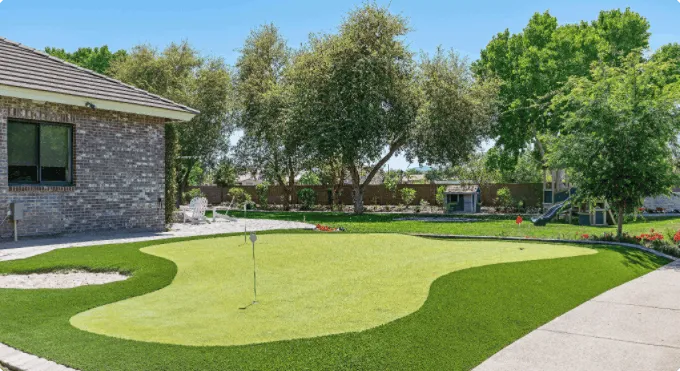
- Afrikaans
- Arabic
- Belarusian
- Bengali
- Czech
- Danish
- Dutch
- English
- Esperanto
- Estonian
- Finnish
- French
- German
- Greek
- Hindi
- Hungarian
- Icelandic
- Indonesian
- irish
- Italian
- Japanese
- kazakh
- Rwandese
- Korean
- Kyrgyz
- Lao
- Latin
- Latvian
- Malay
- Mongolian
- Myanmar
- Norwegian
- Persian
- Polish
- Portuguese
- Romanian
- Russian
- Serbian
- Spanish
- Swedish
- Tagalog
- Tajik
- Thai
- Turkish
- Turkmen
- Ukrainian
- Urdu
- Uighur
- Uzbek
- Vietnamese
sports field artificial turf
Dec . 04, 2024 09:24 Back to list
The Evolution of Sports Field Artificial Turf Revolutionizing Athletic Performance
In recent years, sports fields have seen a significant transformation with the advent of artificial turf, a synthetic surface that has altered the way athletes train and compete. From football to soccer, artificial turf has become an integral component of many sports facilities around the world, offering numerous benefits that natural grass cannot match.
The Rise of Artificial Turf
The first installations of artificial turf can be traced back to the early 1960s, with the original “AstroTurf” gaining recognition after it was laid down in the Astrodome in Houston, Texas. This innovation sought to address the challenges associated with maintaining natural grass in indoor environments, where sunlight and sufficient air circulation were scarce. Over the decades, artificial turf technology has evolved significantly, with modern surfaces designed to provide better durability, safety, and aesthetic appeal.
Benefits of Artificial Turf
One of the primary advantages of using artificial turf is its resilience. Whereas natural grass can suffer from wear and tear due to heavy foot traffic, artificial surfaces can withstand rigorous use without losing quality. This durability makes artificial turf especially appealing for multi-use fields where various sports and activities take place.
In addition to resilience, artificial turf requires far less maintenance than natural grass. Traditional grass fields demand consistent mowing, watering, and fertilizing, all of which incur time and financial costs. Artificial turf, on the other hand, needs only occasional grooming to maintain its appearance and functionality, freeing up resources for other improvements within sports programs.
Safety is another key factor to consider. Modern artificial turf is designed with shock-absorbing properties, which significantly reduce the risk of injuries like sprains and concussions. The consistent surface allows athletes to perform at their peak without the unpredictability associated with uneven natural grass, where divots and mud can lead to accidents.
sports field artificial turf

Furthermore, artificial turf promotes extended use of facilities throughout the year, regardless of weather conditions. In regions with harsh winters or extreme heat, grass fields may remain unplayable for significant periods, hindering athletes' training and competition schedules. Artificial surfaces, often engineered to facilitate drainage and withstand various climates, can be used year-round, thus maximizing usage and ensuring athletes stay active.
Environmental Considerations
However, the transition to artificial turf has not been without its criticisms. Environmental concerns have emerged regarding the sustainability of synthetic materials, which have raised questions about their eco-friendliness. The production of artificial turf involves the use of plastics and other chemicals, which can contribute to pollution. Additionally, the disposal of worn-out turf poses another environmental challenge, as old materials can take years to break down in landfills.
To combat these issues, manufacturers are increasingly focused on developing more sustainable options. Innovations such as recyclable turf and infill made from recycled materials are being introduced, aiming to reduce the ecological footprint of artificial surfaces. By opting for globally recognized certifications and establishing responsible disposal practices, the industry is moving towards ensuring that artificial turf can be a viable and environmentally friendly option.
Conclusion
The impact of artificial turf on the world of sports is undeniable. It has redefined how athletes perform, allowing for greater accessibility and safety across various sports. While the environmental implications of synthetic surfaces warrant careful consideration, ongoing innovations promise to address these concerns. As technology continues to evolve, it is likely that we will see even greater advancements in sports field artificial turf, making it an essential component in the future of sports.
In summary, artificial turf stands as a testament to how technology can enhance athletic performance, improve operational efficiency, and adapt to modern needs. Its continued implementation in sports fields reaffirms our commitment to providing optimal environments for athletes to excel, irrespective of external factors.
-
The Benefits of Artificial Turf for Indoors
NewsJul.15,2025
-
How Artificial Grass Suppliers Ensure Quality Products
NewsJul.15,2025
-
Artificial Grass and Pets: A Space for Relaxation
NewsJul.08,2025
-
Balcony & Outdoor Decoration with Artificial Grass
NewsJul.08,2025
-
Best Indoor Artificial Grass for Home
NewsJul.07,2025
-
Best Pet Turf for Dogs: Safe & Durable Artificial Grass Options
NewsJul.07,2025
Products categories









